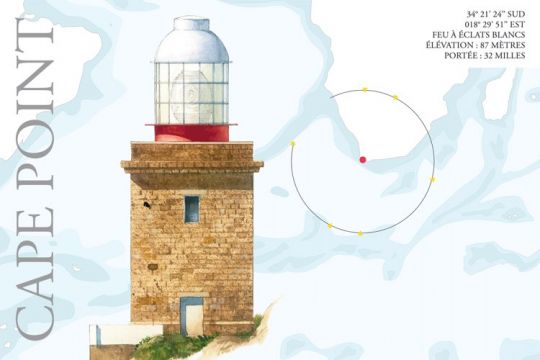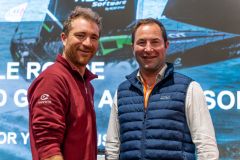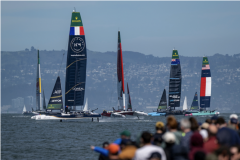Here we are, hovering around Cape Bojador, thinking that the doldrums and then the St. Helena High will slow the sailors down, but no. For those who made it in time, the doldrums were crossed without too much difficulty. For those who made it in time, the doldrums were crossed without too much difficulty, and the trade winds were steady and supportive for most of the fleet, provided the sailors took a route that was, all in all, fairly close to the coast of Brazil.
I'd also like to mention this Cape Verde lighthouse, which marks the entrance to Dakar harbor, because it's at this latitude that the Cape Verde islands are located.
We're entering the waters where Jean Le Cam saved Kevin Escoffier in the 2020 Vendée Globe. Seafarer solidarity well worth two lighthouses!
Cape Verde lighthouse or Mamelles lighthouse.

The lighthouse owes its name "Phare des Mamelles" to the conical shape of the hill on which it was built in 1864. It is also said to be the most westerly lighthouse in continental Africa. If the Cape Verde islands form the western boundary of Africa, and were for a long time infamous as the embarkation point for slaves in the triangular trade, the former port of the Lebous fishermen on the Cape Verde peninsula, which became a Portuguese trading post in 1544, was the rear base.
It wasn't until this trading post was taken by the French in 1857 that the place was named Dakar and became the capital of a Senegal that became independent on November 15, 1958. The port's name derives from the Wolof term "dëk raw", meaning the city of refuge.
Built in 1864 at an altitude of 105 meters, its range of some 50 kilometers makes it a powerful lighthouse, as well as a beacon for aircraft approaching Dakar airport. It is also said to have guided Antoine de Saint-Exupéry and Jean Mermoz during the Aéropostale era!
Cabo da Boa Esperança for the frontrunners!

The first boats in the 2020 Vendée Globe fleet rounded the Cape of Good Hope, the southern tip of Africa, on Monday November 30. It was the Portuguese navigator. Bartolomeu Dias who named this cape in 1487: Cabo da Boa Esperança.
Sent on a mission by his sovereign, John II of Portugal, Bartolomeu Dias' mission was to go further south and find this passage to India. A route that would enable him to avoid Constantinople, held by the Ottomans since 1579. Caught in a storm off Namibia, the flotilla he led was driven far out to sea. After two weeks of wandering, his crew forced him to turn back. But as they headed north, land appeared on their port side: they had drifted far to the east and had crossed to the other side of Africa. Turning around again, they followed the coastline until they found their way back to the North after rounding this cape, which he named Boa Esperança (Good Hope) in recognition of the hope this discovery raised.
Although there was no intention at the time of landing and founding a colony, the cove near this cape became a favored stopover for the English and Dutch from the very end of the 16th century e the harbor is now home to the city of Cape Town, South Africa. Today, this harbor is home to the city of Cape Town in South Africa.
Given the number of shipwrecks in the area, the first lighthouse was built in 1860 at the top of this cape, 249 meters above sea level. Too high in an often foggy region, it was replaced in 1919 by the current turret, which took 5 years to build.


 /
/ 









